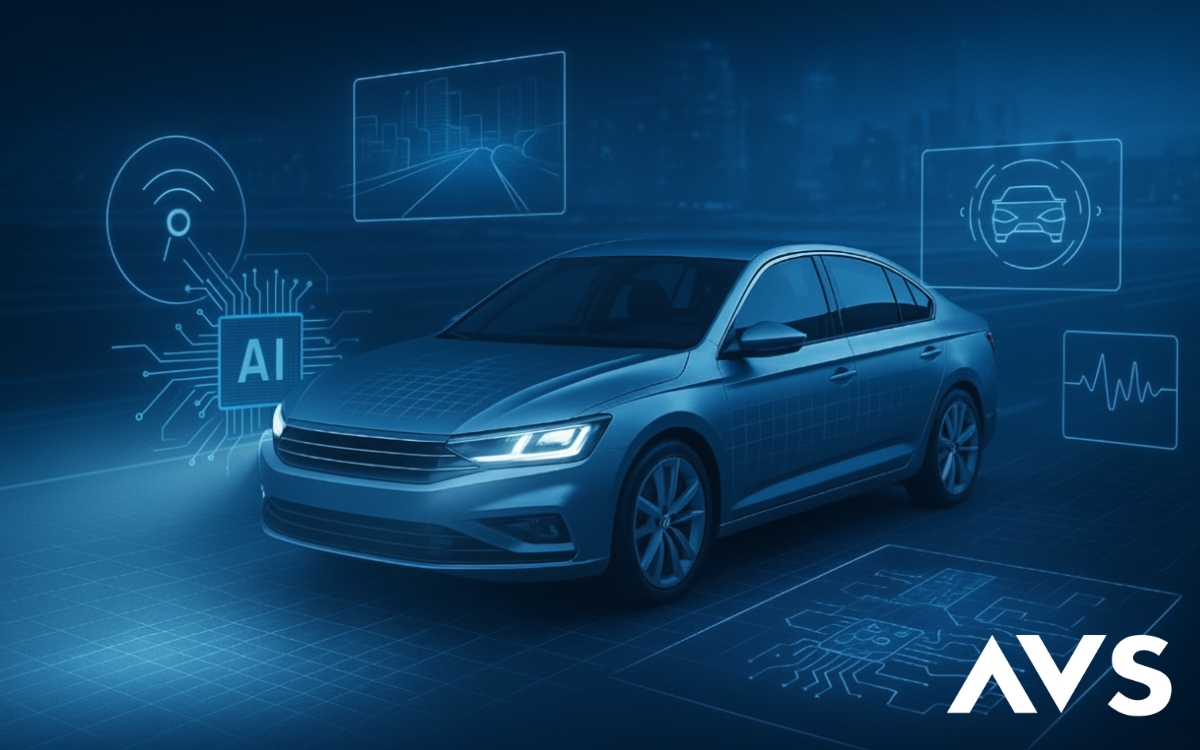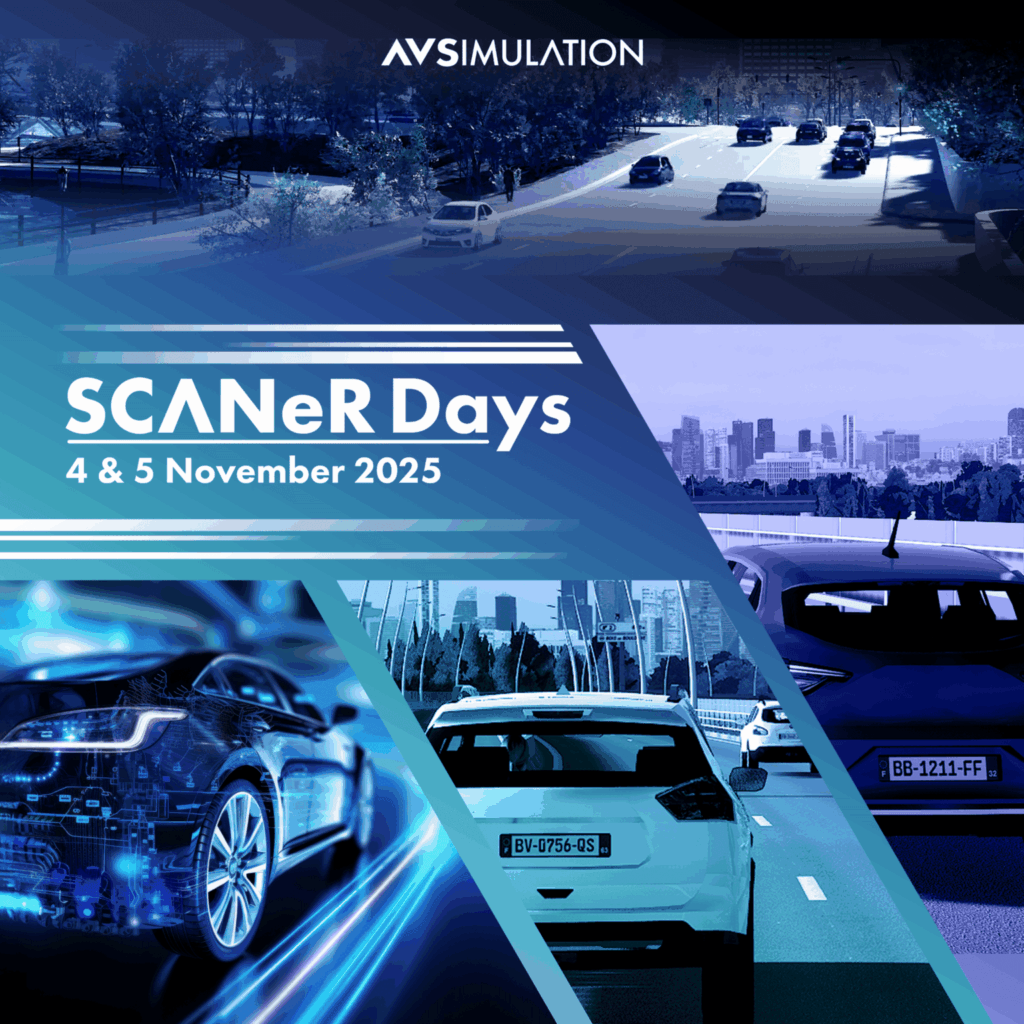The rise of the Software Defined Vehicle (SDV) is reshaping the automotive industry. It’s not just about adding an operating system or enabling over-the-air updates it’s about redefining how vehicles are architected, developed, validated and maintained. And in this shift, simulation is becoming essential.
SDVs bring exponential software complexity, interdependencies between functions, and the need for continuous validation. In this new paradigm, simulation is no longer a late-stage tool it becomes a core part of the engineering workflow, from day one.
SDV : a shift in architecture, not just features
Traditionally, each vehicle function (braking, steering, lighting, etc.) was handled by its own ECU, developed in isolation. With SDV, these functions become centralized, software-driven, and interconnected. They are deployed on shared computing platforms and may even run in virtualized environments.
This implies that:
- The same hardware can host multiple evolving functions
- Software updates can significantly change vehicle behavior
- Functions must coexist safely and robustly in real time
As a result, validation is no longer about checking isolated functions it’s about ensuring safe and reliable interaction between software modules in dynamic, often unpredictable, environments. This is where simulation shines.
Simulation : a complete SDV development environment
A simulation platform like SCANeR™ enables engineers to model and test the entire SDV ecosystem:
- The vehicle itself, including its dynamics, control systems, and components
- The environment: roads, weather, infrastructure, traffic
- The sensors (camera, lidar, radar) via functional and physics-based models.
- The software, under test in Software-in-the-Loop (SIL) or Hardware-in-the-Loop (HIL) modes
This makes it possible to carry out continuous, realistic validation early in development, well before physical prototypes are available. And it allows the testing of edge cases, failures, or critical scenarios safely and repeatedly.
A tool to move faster and safer
SDV development follows a new rhythm: frequent OTA (over-the-air) updates, continuous feature deployment, post-delivery upgrades… This breaks away from the classic V-cycle with its long, sequential validation phases.
Simulation enables a shift to continuous testing:
- Every software iteration can be validated automatically across thousands of scenarios
- Feedback loops help fix issues early
- Many functions can be validated even before hardware is finalized
This results in faster development, higher quality, and lower cost all without compromising safety.
Breaking silos : simulation as a shared platform
One major benefit of simulation is that it creates a common ground for collaboration between departments:
- Software engineers can test new algorithms in realistic environments
- Sensor teams can evaluate performance in adverse conditions
- Validation teams can automate test campaigns and scenario generation
- Safety engineers can design and execute test plans for ISO 26262 or SOTIF compliance
All of this can happen on a single, shared platform like SCANeR™ designed to integrate with HIL, SIL, and cloud workflows.
Use case: software integration in an SDV
Consider an adaptive cruise control function connected to GPS, perception sensors, and the braking system. In a traditional vehicle, each module would be validated separately. In an SDV, these functions evolve dynamically, get updated remotely, and may adapt based on regional regulations.
Simulation enables teams to:
- Check software compatibility across modules
- Evaluate vehicle behavior under various real-world conditions
- Analyze side effects on other systems (e.g., steering, braking, HMI)
- Test different hardware setups without changing physical benches
This makes simulation an integration accelerator, reducing risk and improving confidence in system-level performance.
Moving toward intelligent digital twins
With the rise of onboard AI, edge computing, and learning-enabled systems, vehicles are no longer static. Their software evolves. Their behavior adapts. They learn.
In this context, simulation is not just for pre-production validation it supports the development and deployment of live, evolving systems.
This is where the concept of a digital twin becomes powerful: a virtual replica of the vehicle that mirrors its physical counterpart, enables predictive testing, and integrates data from the field.
With its open architecture, SCANeR™ is fully ready to serve as the foundation for such twins interoperable with AI toolchains, cloud simulators, and embedded HIL platforms.
Conclusion : simulation is the backbone of the SDV
The Software Defined Vehicle is changing everything from vehicle design to validation processes. And simulation is what enables that shift to happen safely and efficiently.
It provides the foundation for testing, collaboration, and agility. It enables earlier decision-making, faster iteration, and a robust path from prototype to deployment. In a world where vehicles are now defined by software, simulation becomes the invisible backbone that makes it all work.



